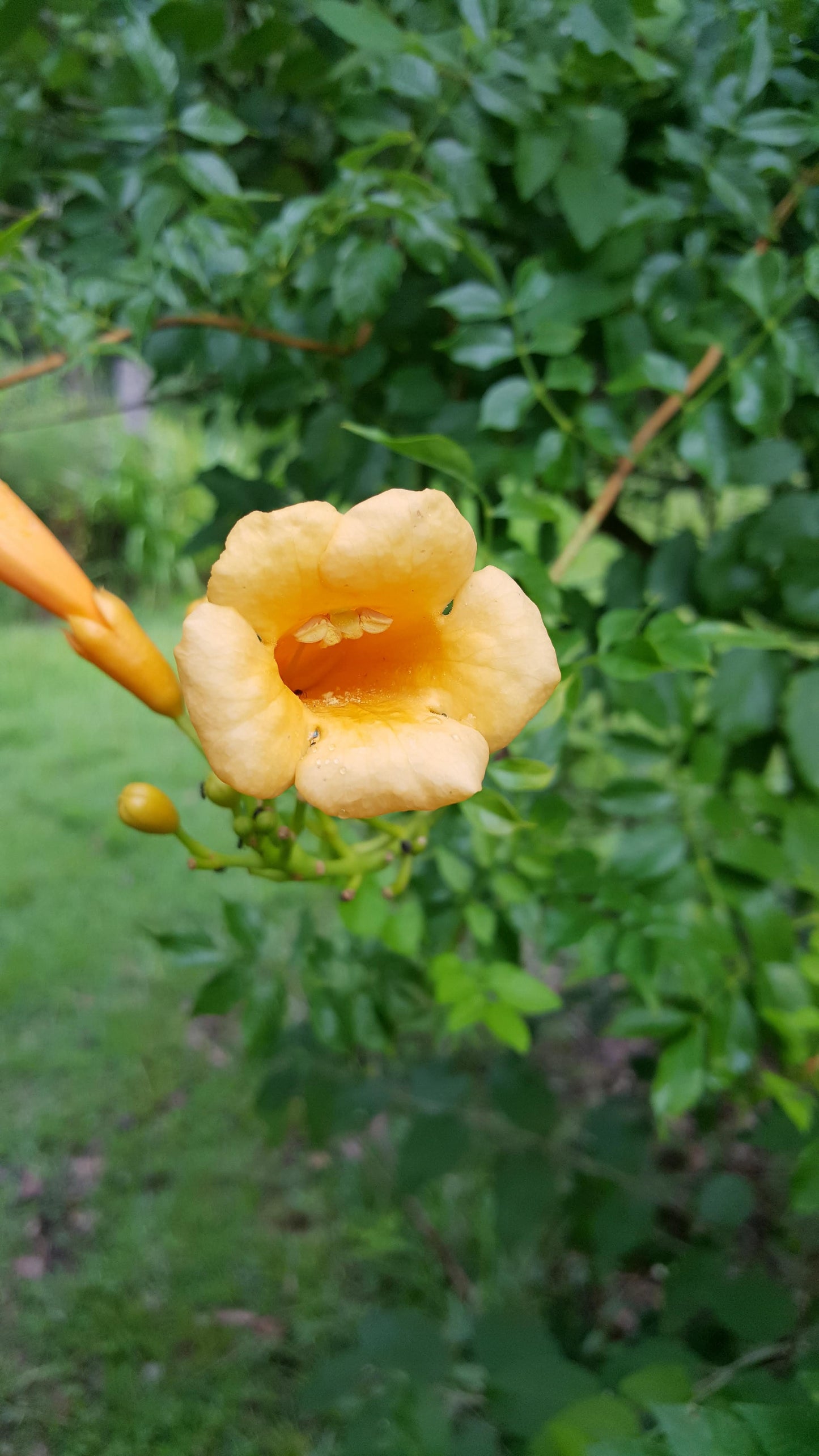Gnarly Nursery
Campsis radicans 'Flava', Golden Trumpet Creeper
Campsis radicans 'Flava', Golden Trumpet Creeper
Out of stock
Couldn't load pickup availability
Trumpet creeper
Trumpet creeper (Campsis radicans) is a high-climbing woody vine so named because its showy flowers are trumpet-shaped. It is found in moist woodlands and thickets throughout Central and northern Florida. Flowers bloom year-round, peaking in spring and summer. They are very attractive to hummingbirds.
Trumpet creeper’s flowers are long, tubular and yellowish-golden with a yellowish throat. They are born in terminal cymes. Leaves are dark green, pinnately compound and fern-like. Leaflets, which number at least 7 per leaf, are ovate to lanceolate with serrated margins and pointed tips. Leaves and leaflets are oppositely arranged. The plant climbs via aerial rootlets. Tendrils are lacking. Stem is woody and robust. Fruit is a long (3–5 inches) bean-like capsule bearing many winged seeds.
Flowers are very similar in appearance to the flowers of its cousin, Crossvine (Bignonia capreolata). The latter has visible tendrils and its compound leaves have only two leaflets.
The species epithet radicans comes from the Latin radix, or “root,” and refers to the plant’s motility via its aerial roots. There are only two species in the Campsis genus — the other is Chinese trumpet vine (C. grandiflora), a native of East Asia.
Family: Bignoniaceae (Bignonia family)
Native range: Central and north Florida
Hardiness: Zones 6–9B
Lifespan: Perennial
Soil: Moist sandy, loamy or clay soils
Exposure: Full sun to partial shade
Growth habit: 30’+ long
Propagation: Cuttings, seed
Garden tips: Because of its fast growth rate and potential size, Trumpet creeper may be difficult to control in a small setting. It is best used in a naturalistic landscape or, with persistent pruning, trained on a fence or large trellis. Do not let this plant grow on a house or other structure as its aerial roots can damage wood, brick, stone and stucco. Trumpet creeper grows well in shade, but flowers more profusely in sun. In the north, it is deciduous, while in the south, it is generally evergreen.
Share



